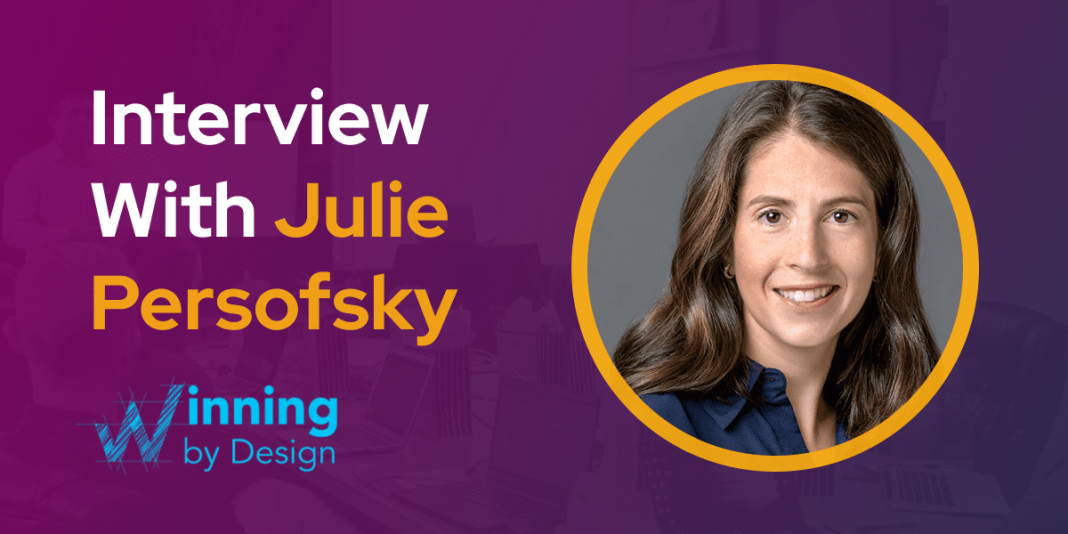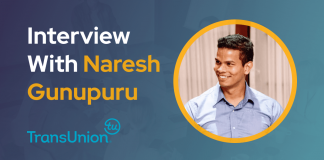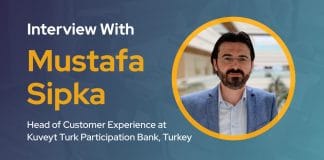Hi Julie, tell us about yourself and your background.
I am an adventurist, mom of 3 very active kids, wife of an entrepreneur, and you will often find me taking calls while walking my dog through the forest.
I stumbled into Customer Success when I was leaving a consulting job in New York, and one of the managing partners recommended I look into a company called Eloqua. I didn’t know what I was going to do for them, given my background in Advertising and Consulting. First I tried out for consulting, and they told me I wasn’t qualified. Second, I applied for the position of a “Solutions Manager” (at the time, that’s what the Customer Success team was called). After many interviews, I convinced them to hire me, even though I did not have enough technical expertise. This is one of the most interesting aspects propelling my career in CS. There’s two types of people in CS – those that have strong technical affinity and often move up through support, know the product inside and out, but do not know who the customer is and why they need your product. Then there are the people who know who the customer is, but don’t know much about the product. I was one of the latter. I had worked with marketers, so I understood them and I knew what was important to them. That’s how I got started.
From there I joined an early stage company, I was running client services but my official title was: “Get it done, make it happen, and make sure everybody is happy”. We were in the very innovative healthcare tech space, and it was my responsibility to coordinate getting a 3,600 pound machine into the lobby of one of the top 5 Toronto hospitals, and deal with all the legal and political issues that arose. During my time there, nurturing the client and understanding the impact for the hospital and the patients, we were able to expand to multiple hospitals and divergent customers’ needs.
I went on to Influitive to run Customer Success and later Account Management for 5 years. I was the first non technical hire and the first executive. We learned how to sell the product better, and what features were important and impactful to customers. At the time it was a freemium product; so, we had to figure out what would make our customers want to pay for it. We had a real focus and understanding for when you deliver the right product to the right people, it sells itself internally. All you have to do in the role of Customer Success is to help facilitate those conversations.
In all my roles I consistently outsold my peers in Sales with my existing customer base. Which is why joining Winning by Design was so exciting to me; it was aligning the entire go-to-market functions. Marketing, Sales and Customer Success all speaking the same language. As the Customer Success practice lead, I get to work with so many dissimilar companies, and help them realize the impact, profitability and revenue opportunities in Customer Success.
What is the biggest misunderstanding about customer experience, in your opinion?
The biggest misunderstanding is that we need to do what the customer asks us to do. I will explain. Customers typically are buying your product or service for the first time. They know what problems they are trying to solve, but they don’t necessarily know how to solve their problems. Whereas you, in the CS role, know what the best in class should look like. You know what key moments your customers need to achieve in order to have maximum impact with the product. We often fall into the trap of not proactively driving that journey, but instead we are reactive in answering our customers’ requests and what they are asking. Ineffectively, we miss the unique opportunity to design the ultimate customer experience to drive the best outcome for your customers.
What are some of the newer CX companies/solutions you’re keeping your eyes on right now?
Of course, we have the great CS tools that have been around since the beginning such as Gainsight and Totango; they started it all and we have seen them evolve over the years.
There’s also a lot of really great CS products out there that are innovating and having remarkable results. One that I’m particularly excited about is Catalyst, maybe because it’s started by people who have been in CS roles, or maybe it’s because of the way they are looking at the product. Also, their head of CS used to work with me and I think she is a superstar.
I know ClientSuccess has just launched their new CS tool, and I think that definitely something to watch out for. It’s a new way of thinking of a platform and day-to-day usage coming together.
I think we’re going to start seeing an emergence of new AI tools that are going to be used to help scale, not replace. In addition, we’re going to start seeing a lot of non-traditional CS tools being used such as call recording software (Gong, Chorus) to support coaching, and video technology (Bombbomb, Vidyard) to support asynchronous communications. We’re seeing some different workflow management solutions such as Workato being leveraged to connect all the different pieces.
It’s very important when thinking about what CS tools we want to use in our organizations, we think about what it is that we want these tools to help us achieve. Document and plan out the process that is going to help us scale, and only then bring on the tools that are going to help us in the most beneficial way. Too often I see companies that have problems, purchase a tool they think is going to help them get through it. However, they end up investing a lot of money and seeing no impact as a result, because they have not done the required work upfront to have that technology be useful. If you do not have a process, CTAs, health score to automate, monitor and track. Why put a CS tool in place? If you are not going to review and coach your team on calls? Why put a call recording software in place? If that’s not part of your team behaviour and how your managers coach your teams.
What can companies do to improve customer loyalty and retention?
Connect to impact non-stop. We get so comfortable in the day-to-day and what customers are asking from us and fulfilling all their requests, that we forget to look back and think about whether this customer is solving the pain and achieving the impact they were looking to achieve when they first purchased. Has that impact changed? Are we helping them achieve that too?
We get so caught up in vanity metrics such as NPS or usage, that we’re getting caught off guard when our customers tell us they are leaving because they haven’t been able to achieve the impact they were looking for, even though usage might be high. Focusing on the real important elements that are strategic to their business in the day-to-day interactions with your customers is going to be the best way to increase loyalty.
What do you think is most relevant and why: CSAT (customer satisfaction score), NPS (net promoter score), or CES (customer effort score)?
They are all BS vanity numbers. I would not waste my time tracking any of them. Instead, I would look at key conversion metrics across the bowtie funnel. Are your customers onboarding in the right amount of time? Are they achieving first value within the first 30-60-90 days? Have you defined what “first value” is to your customers? What percentage of your customers are successfully onboarding? What percentage of your customers are renewing? What percentage of your customers are upselling and expanding? And how can you improve on those metrics? What percentage of your customers are achieving the impact they are looking to achieve? Those are metrics that actually matter and will define the success of your organization. All other numbers are for reporting and to make you feel good, with the caveat of support. CSAT is a great way to measure support and make sure that those interactions are positive experiences. It can be as simple as a smiley face, neutral face or frowny face after an interaction. Immediacy after that interaction is key. But as far as CSAT goes, the only true way to measure it is through tracking these conversion rates.
Health score is a great way to measure use, interactions with your customer, bugs, escalations, impact to quantifiable metrics they have identified in the onboarding process, etc. If your product has a licensing component, track the percentage of licenses that are used on a regular basis.
Advocacy is another metric I would start tracking. If a customer is advocating for you, whether it’s on social media, through referrals, or being a case study or a reference, then those actions are a good indication of a customer who is seeing success and impact with your product. So much so, then they are willing to share it with their peers. Why ask someone if they would be willing to promote you to a friend, when instead you can actually ask them for a referral? That not only is more impactful to your organization, but it will make them think about how much value and impact they’re getting from your product and share those results with peers.
Unless your product acts more like a B2C product, then NPS is not actually going to be useful.
How can companies better use social media in the era of customer-centricity and personalization?
There’s so much information out there about your customers. Ten or more years ago, social selling became the device sellers had to do. Research your customer, follow them on LinkedIn, get engaged with them, comment on things they are posting on. Don’t outreach to your customer or prospect until you have seen what they are talking about and you have a good understanding of what’s important to them. That shouldn’t stop once they become your customer. Consequently, when you do have conversations with them, they are relevant to what they are talking about on social media. It also is a really great way to engage with them and get advocacy from them. You can also see how and if they are advocating for your company on social channels: to track it, and appreciate them for doing so.
What is your opinion on AI-based chatbots to handle customer support?
Love it (in the right way)! Nobody likes talking to a bot when they are trying to solve a complex problem, but if used to speed up the support process and route you to the right person or the right article, I think it’s great. A lot of people love self help; they just don’t know where to find it. If there is a video or an article that can make it easier for people to solve their problems, then great! It’s an enhancement to make the process more efficient for the customer first, then for you as the company. If you can hit those two criteria, then that is the mecca.
When you’re thinking about AI, think about the customer experience and how you can make it more seamless for them, more enjoyable for them. And only then match that with efficiency and automation.
What was the best movie you saw that has come out during this past year?
Honestly, I have barely been able to stay awake for movies since the pandemic, but if I have to choose one it would be The Mitchells vs the Machines. It’s hilarious. The best movie that kids will enjoy and miss half of the jokes, and we, as adults will appreciate, especially if you work in tech. I don’t get a lot of time to watch movies, but the show that I think has been the best in the past year is Ted Lasso, it has given everyone some much needed perspective and laughter during the toughest times over the past year.
Last but not least, what is your favorite CX metric?
Net retention. If you want to be taken seriously at the board level, talk about the revenue metrics that they care about most. If your customers aren’t happy, they’re not buying more from you, so stop measuring happiness and start measuring revenue. CS is behind the cash registers at our organizations; we need to stand up and show that this is where the profitability comes from. We need to show the board that an investment in CS drives profitability for your company. We’re so maniacally focused on bringing in new logos to drive revenue for our organization, but recurring revenue is the result of recurring impact. So, if we create recurring impact at key moments throughout the customer journey, you’re going to see recurring revenue, and that’s why measuring net retention is critical.






